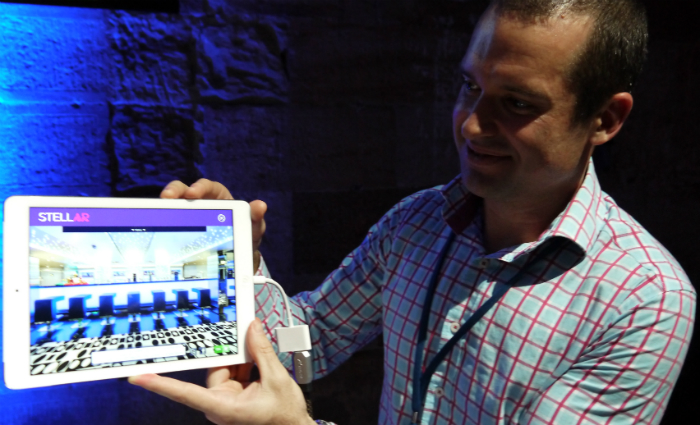
Australia’s biggest sheetfed printer Blue Star has launched its augmented reality division in the hope of cashing in on the emerging technology’s ability to integrate print and digital technologies.
Printers and markers attended the Blue Star Interactive launch event in Sydney, which showed off the power of print fused with digital media. There were interactive demonstrations, including cruise ship brochures offering virtual inside-views of cabins, a virtual test car drive, and an interactive instruction manual showing how to put together a barbeque step-by-step.
Using an iPad, or similar digital device – and focusing on printed images as the trigger – videos, 3D models or other digital content spring to life on the screen.
[Related: More Blue Star AR news]
Special guest speaker at the event, former Keyhole.com (Google Earth) Director and head of a company that develops Google Glass applications, David Lorenzini, says AR will not cannibalise Blue Star’s print business, but ‘supercharge’ it.
“We are seeing a new era of effortless interaction with technology. For print the impact is incredible,” he says.
“With AR on one page you can get 100 things for 100 people – translation into different languages, tailored content or a tutorial on your first visit.
“You can design ways to entertain your customer, then help them easily share what they have seen, or click for more info, or subscribe – all from the one printed page. There is an amazing world coming. Print is going to persist as far as I can see.”
AR entrepreneur and former Silicon Valley consultant David Francis will lead the division, which will offer end-to-end services for clients, including developing AR technologies and applications to campaign-based creative and delivery support, using smart mobile devices.
Francis says one of the key strengths of AR as an advertising medium is its ability to measure viewing numbers and collect data in real time for advertisers.
“It’s about reducing friction and creating the shortest distance between intention and action, allowing customers to explore what they want to know without having to navigate through websites,” he says.
“This isn’t about flashing your brand up in someone’s vicinity and calling it an impression or an eyeball.
“Through this medium not only can you see and hear a product but you can interact with it, see it from any angle and engage your sense of the world around you – that’s how memories are made. It’s about becoming more contextually relevant to your consumer, interacting with them in their world and inviting them to opt in and meet you half way.”
Comment below to have your say on this story.
If you have a news story or tip-off, get in touch at editorial@sprinter.com.au.
Sign up to the Sprinter newsletter
